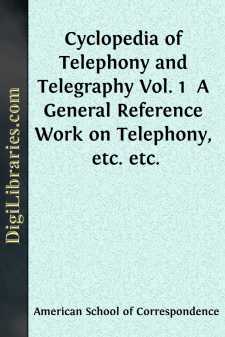Categories
- Antiques & Collectibles 13
- Architecture 36
- Art 48
- Bibles 22
- Biography & Autobiography 813
- Body, Mind & Spirit 142
- Business & Economics 28
- Children's Books 16
- Children's Fiction 13
- Computers 4
- Cooking 94
- Crafts & Hobbies 4
- Drama 346
- Education 46
- Family & Relationships 57
- Fiction 11829
- Games 19
- Gardening 17
- Health & Fitness 34
- History 1377
- House & Home 1
- Humor 147
- Juvenile Fiction 1873
- Juvenile Nonfiction 202
- Language Arts & Disciplines 88
- Law 16
- Literary Collections 686
- Literary Criticism 179
- Mathematics 13
- Medical 41
- Music 40
- Nature 179
- Non-Classifiable 1768
- Performing Arts 7
- Periodicals 1453
- Philosophy 64
- Photography 2
- Poetry 896
- Political Science 203
- Psychology 42
- Reference 154
- Religion 513
- Science 126
- Self-Help 84
- Social Science 81
- Sports & Recreation 34
- Study Aids 3
- Technology & Engineering 59
- Transportation 23
- Travel 463
- True Crime 29
The Electric Bath
Categories:
Description:
Excerpt
CHAPTER I.
THE APPARATUS.
To a proper comprehension of the succeeding chapters, it is necessary first of all to be familiar with the apparatus employed in carrying out electro-balneological treatment, and I therefore proceed to give a description of this. It may conveniently be divided as follows, viz.
- a. The tub;
- b. The electrodes and connections;
- c. The water;
- d. Chemicals;
- e. The batteries.
(a) The Tub. This must be made of a non-conducting material. Of substances that will answer, I will mention: wood, porcelain, soapstone, vulcanized rubber, or glass. In choosing one of these materials, regard should be had to the facility of attaching the electrodes. In this respect wood deserves the preference over all the others mentioned. Where economy is to be studied, it has a further item in its favor.
The tubs, which I have now in use for nearly three years are made of wood, and I find them to answer very well. It must not be forgotten, however, that a wooden tub requires to be well painted on the inside, in order to prevent its becoming water-soaked, because in that event it would become a conductor of electricity, and interfere to some extent, with the administration of the electric current in the bath.
The shape and size of the tub may be the same as those of an ordinary bath tub. To suit individual cases however, its length may be made to vary. The only peculiarity in its construction is at the head. Here, instead of slanting, it is made square, and the slightly concave (from side to side) board against which the back of the bather is to rest, is fitted in afterwards. This is necessary, because it is very difficult to make a wooden tub with a slanting back water-tight. If the length of the tub from outside to outside is made to measure about five feet ten inches, the back-rest fitted in at a proper slant will bring the inside of the tub to about the right length for an average male adult. All around the upper edge of the tub runs a wooden coping, which must not be fastened down however until all the attachments for conducting the current are in situ. Along that portion of the top of the tub where requiredÐÑвâ¬вÐÑand this will depend on the situation of the binding posts presently to be mentionedÐÑвâ¬вÐÑand underneath the coping, runs a groove for the reception of the wires that are to connect the carbon electrodes on the inside of the tub with the binding posts on the outside. This groove is continued vertically along the inside of the back-rest and foot of the tub respectively, to communicate at either end with the bed for the reception of the carbon plates. These vertical grooves should at their lower end be a little over ÐâÐÑ inch deep, in order to admit of the wires being introduced beneath the carbons.
The face of the foot of the tub and that of the back-rest, should have in their centres (from side to side) and commencing at about five inches from the bottom of the tub, a bed for the reception of the carbons. The dimensions of these receptacles must of course correspond to those of the carbon plates to be employed as electrodes. Those which I use measure 12ÐÑвÐâ8ÐÑвâ¬ÐÑ at the head, 8ÐÑвÐâ6ÐÑвâ¬ÐÑ at the foot of the tub. They are ÐâÐÑÐÑвâ¬ÐÑ thick. They are placed so as to have their long diameter correspond to the height of the tub....












